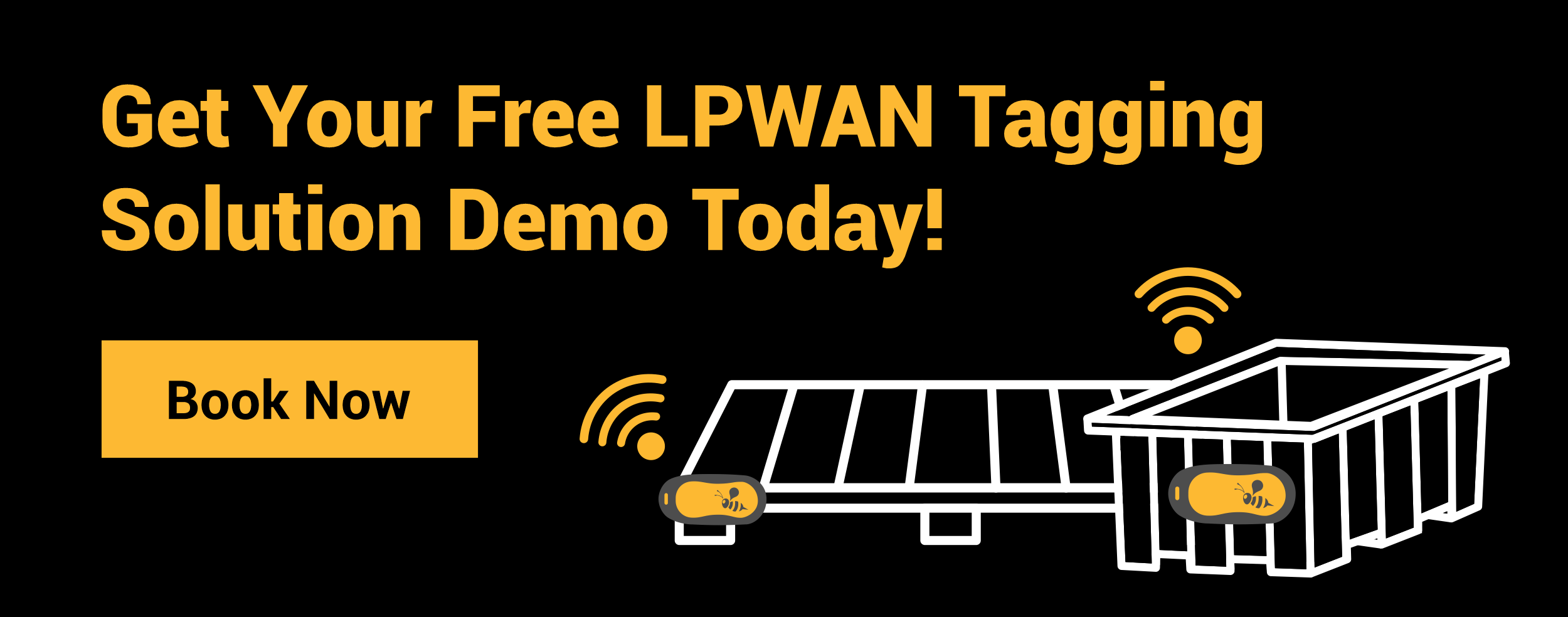Reusable packaging or returnable packaging becomes an important part of your business operations as the size of your company grows. It becomes increasingly important to keep track of your reusable packaging as they add up to your business's overall ROI (Return on Investment).
Reusable packaging is a piece of casing, pallet, or container used to secure your shipment and products. Reusable packaging varies in shape and size, depending on the size and type of the product or cargo. Reusable packaging can also be referred as reusable pallets or reusable assets. Based on usage, reusable transport packaging (RTP) can be segregated as:
- Reusable Durable Secondary Packaging: These include packaging items like bags, bins, crates, totes, kegs, drums, Intermediate Bulk Containers (IBCs).
- Reusable Load Carriers: These are the packaging apparatus for heavier products. The packaging items include reusable pallets, racks, cages, shipping containers, tubs, reusable plastic containers, and ISO or tonner tanks.
What are the Industries Frequently Using Reusable Packaging?
Although the usage of reusable packaging is distributed unevenly around various industries — pharmaceutical, chemical, and automotive industries are the three major domains using returnable assets.
The use of reusable transit packaging (RTP) in the automotive supply chain helps reduce the logistics cost and increase supply chain efficiency — if you execute reusable packaging management correctly. Automotive high-value parts need specific packaging to reach their destination in factory conditions. Such reusable packaging becomes critical for companies that produce high-value parts like engines in one country and then send them out to other nations for assembly.
Similarly, the heavily regulated chemical and pharmaceutical industries also use a host of reusable packaging depending on the type of shipment and varying compliance requirements. For instance, chemical raw materials need to be shipped in specific containers for their hazardous nature or to protect them from environmental impact. Moreover, in a cold chain-specific scenario, you must use reusable cryogenic containers to achieve the compliance norms.
Why do Supply Chain Companies Need to Track Reusable Packaging?
According to research, on average, 10 to 40 percent of reusable packaging does not make it back after completing a delivery. This loss can be anything from package theft to damage to loss due to negligence. Reusable packaging monitoring and visibility often take a back seat over other supply chain events like shipping or warehousing. The need to track reusable packaging arises from the following:
- The cost of losing assets.
- Procuring or buying new ones.
- Not having them in time for a shipment has a direct impact on your revenue goals.
Read About the Top 6 Reasons to Track Your Reusable Packaging
What are the currently Available Tracking Technologies for Reusable Packaging?
Tracking solutions for reusable packaging are mostly restricted to company locations like warehouses or large yards. For example, a billion-dollar chemical company must track their heavy load carrying containers, ISO, or tonner tanks. These assets are quite expensive to buy new or even rent from a lender.
A chemical company has yards spread across several thousand acres, and there could be thousands of reusable shipping ISO tanks in such facilities. To keep track of the returnable assets, they often deploy technologies like RFID (Radio Frequency Identification), GPS (Global Positioning System) trackers, or just BLE beacons. Moreover, many times these companies rely on manual accounts of the asset when they enter or leave a yard. Let us look at the problems that come with these technologies.
RFID: It is one of the most widely used reusable asset tracking technology around the globe. But this technology uses several elements to work efficiently, like gateways, designated tracks, LAN connectivity, Wi-Fi routers, and antennas. The infrastructure-heavy technology:
- Is expensive to deploy, maintain and overhaul.
- Requires ground staff to have the proper training to use and maintain it.
- Has its usage restricted predominantly to your facilities, and it is expensive to deploy at a customer location. It is only viable for tracking fixed assets and bulky items like railcars, ISO tanks, etc.
GPS Trackers: A GPS-based reusable packaging tracking solution is comparatively lighter than an RFID infrastructure, but it has other limitations, like:
- You can have the location of the container, but it is not an accurate indicator of the risks. With GPS tracking, there is a high chance that you get an incorrect update about the state of the returnable asset as it gauges problems based on ETA (Estimated Time of Arrival).
- It does not provide you with dwell time and other risk factors, that help you optimize reusable packaging dynamically to achieve supply chain efficiency.
BLE (Bluetooth Low Energy) Beacons: BLE beacons are small-sized trackers attached to packages. It is compact and weighs close to 10 grams. It supplies real-time reusable pallet information from the warehouse and in transit, overcoming RFID's limitations of heavy infrastructure.
However, BLE beacons also need Wi-Fi gateway routers to send spatial data to the cloud. Although it is not as infrastructure-heavy as RFID, it needs you to install Wi-Fi routers in your warehouses, customer location, or places where you want to track your reusable packaging. For a true, real-time infrastructure-less solution, you need to look towards IoT (Internet of Things).
What is the Best Technology to Track Reusable Packaging?
The answer is a hybrid IoT solution backed by a bespoke software platform with strong data analytics capabilities. An IoT solution has the added advantage of an infrastructure-less setup. You have purpose-built IoT tracking devices hardware with good connectivity, sending data to an advanced analytics platform.
A hybrid IoT solution removes the extra step — like in a BLE-based solution — where you must deploy Wi-Fi gateway routers. The IoT tracking devices work as independent transmitters and are the only hardware involved in the entire solution. BLE Beacons transmit real-time information; however, it still requires the setting up infrastructure at all the facilities, which consumes time, requires effort, and comes with a cost.
The hybrid IoT solution is not just the hardware but the real-time data and analytics that bring clear, actionable insight under one centralized control tower.
How to track Reusable Packaging in Real-time with an IoT Solution?
To monitor reusable pallets, returnable containers, or RTPs in real-time, you need an IoT tracking device attached to reusable packaging and an IoT platform that you can integrate with your SAP using an API.
For best results, you require a hybrid IoT solution that works using connectivity technologies like Nb-IoT, LTE-M and Sigfox.
In addition to these, the IoT solution must have a 2G cellular network as a backup used when the above three are not available.
Once you have such an IoT platform, you could integrate SAP or your ERP (Enterprise Resource Planning) to the platform using APIs or webhooks. The four steps involved in tracking reusable packaging are as follows:
- Tagging the reusable packaging: Attach the IoT tracking tags onto your reusable packaging that use an Nb-IoT, LTE-M, Sigfox, and 2G signal. The 2G connectivity helps when there is no LPWAN connectivity, making it a robust solution. This step takes place at your warehouse or packaging location, eliminating the need for any external customer teams to have long training sessions. The approach does not require you to install a Wi-Fi infrastructure or gateway at your warehouse or customer locations. You have an infrastructure-less tracking solution. The devices has along battery life and can last for months or years depending on calibration.
- Get unique identification for reusable packaging: The tags help monitor your reusable packaging in your warehouse, when in transit on a shipment, and at your customers' warehouses. It provides end-to-end visibility across your supply chain. Each IoT tag ID is linked with your SAP or ERP — a one-time exercise. Each reusable packaging item gets a unique ID in your ERP. If you want to use an existing reusable packaging management solution, you can do that too. Once you have designated IDs for each asset, you have relevant data on every unit of reusable packaging.
- Assign shipment to the reusable packaging for better use: Assign your reusable packaging to your shipments as a non-ordered item per your standard process on SAP or ERP. With clear information on the location of your reusable packages in your warehouse, in transit, or at your customer location, you can perfect the flow of packaging. A reusable packaging tracking platform accomplishes the following:
- The real-time data open avenues like real-time asset distribution across your network, which helps in reusable packaging optimization by dynamic allocation.
- The real-time knowledge on in-use, idle packaging, and if the packaging is at risk of theft or loss.
- You get clear insights from past data, which brings better predictions on dwell time, the cycle times across suppliers, and the aging time for each packaging. It enables better planning for just-in-time shipments.
- You have access to future data predictions on shortage of packaging inventory, shipping lane performance like ETA & OTIF, which lets you create a better product fulfillment plan.
IoT-based tracking is compatible with many existing reusable packaging management systems. It offers integration to your current ERP, TMS (Transport Management Solution), WMS (Warehouse Management System), or CRM systems, which offers all-around visibility under one roof. A centralized control tower's dashboard allows you to make decisions at a much faster rate. - Create Custom Reports on Your ERP or reusable packaging management solution: Once you have the entire setup at your disposal, you can now create custom reports for your ground teams. Reports on aging data of your reusable packaging, RTP stock at each warehouse, supplier, or distributor location. You also get custom reports for RTP stock by zones in large warehouses, and when your returnable packages move outside your chain of custody, you get alerts.
Road to Sustainability
Reusable packaging is playing its part in allowing companies to mitigate the impacts of climate change. Single-use packaging harms the environment as it directly pollutes the place it is disposed at, especially true for plastic packaging. Single-use packaging also indirectly hurts the surrounding with new productions that adds up to the carbon footprint of a company.
To achieve greater sustainability, companies need to incorporate advanced visibility solutions that help them minimize reusable packaging losses. It will help cut carbon emissions and help enterprises move closer to the sustainability goals.
How to find the Perfect Reusable Tracking Solution?
Supply chain leaders must look for a compatible solution with the company's existing tracking technologies like RFID. They must also analyze the visibility partner for factors like configurability of the solution and global availability. Other factors like if the reusable packaging management solution is CapEx or OpEx, and offer hardware, software, and analytics under one roof are also important and shall be investigated.











